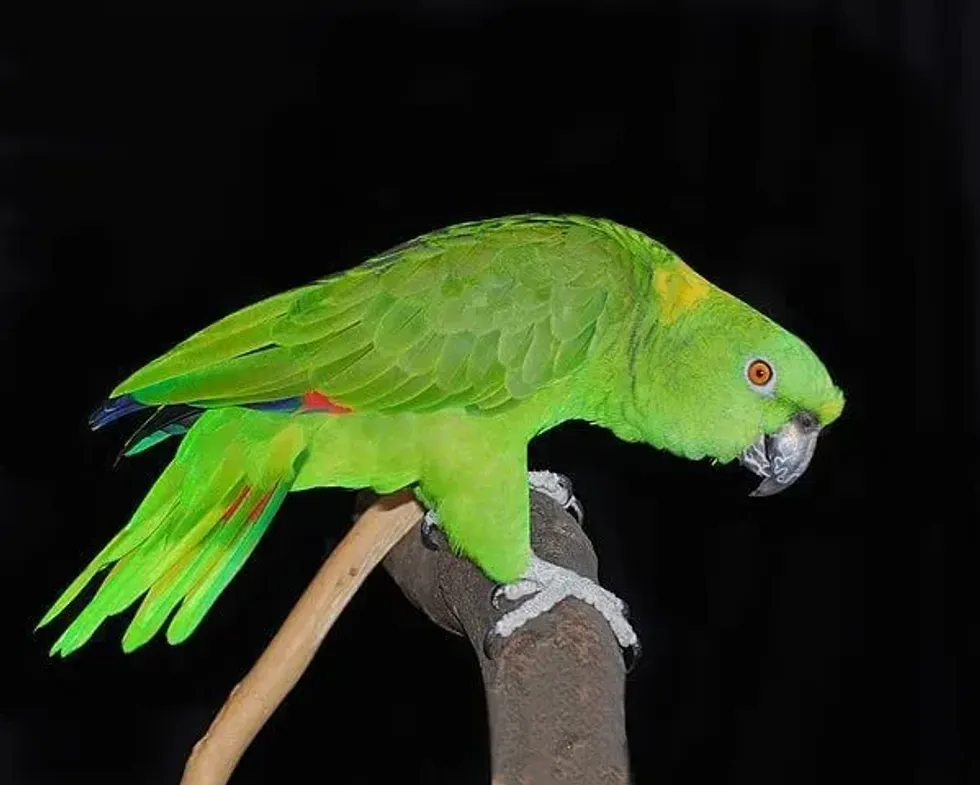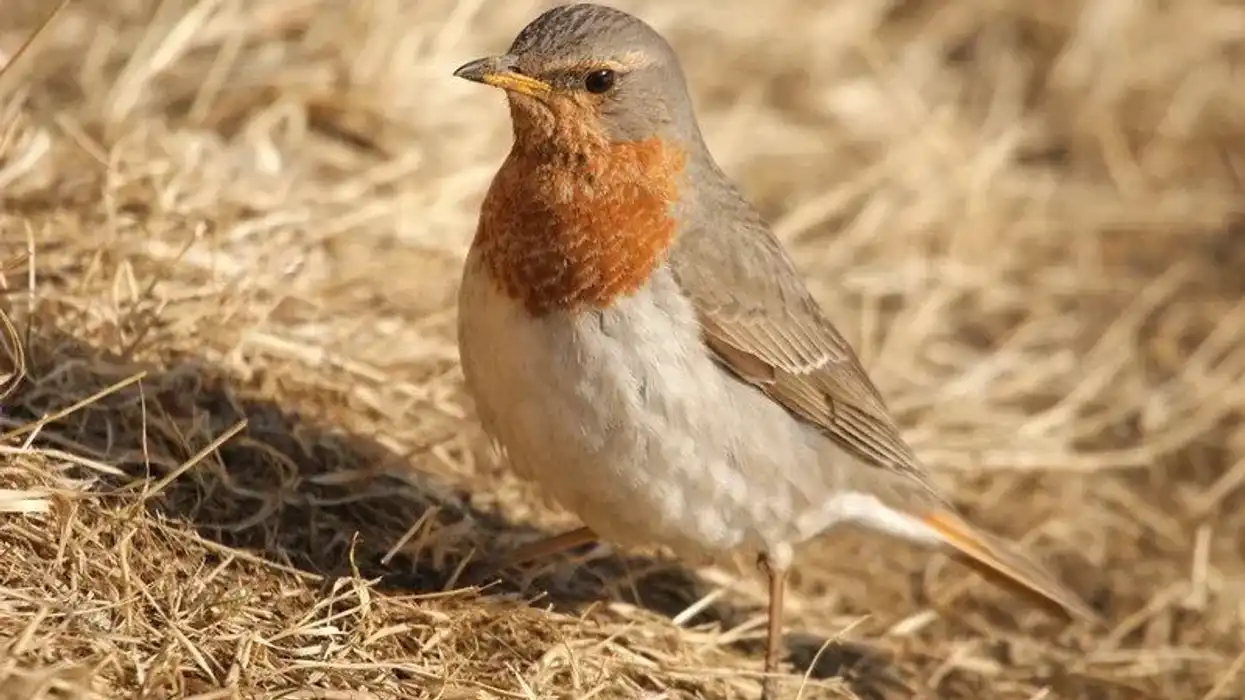The yellow-naped amazon (Amazona auropalliata) belongs to the order Psittaciformes. They have a distinctive yellow feathers patch on their green feathers.
These birds are known to have three subspecies which are the A. A. auropalliata found in Costa Rica, A.
A. parvipes found in eastern Honduras and northeastern Nicaragua, and A. A. Caribaea found in the Bay Islands, Honduras. These parrots are spotted in Costa Rica, Nicaragua, Honduras, Mexico, and Central America.
The yellow-naped Amazon (scientific name Amazona auropalliata) lives in wild habitats as well as with humans as their pets in their houses. The yellow-naped Amazon lifespan in captivity is noted to be far greater than in the wilds.
Yellow-naped Amazons are hunted or preyed on in the wild very quickly and face a potent threat from predators resulting in a reduced lifespan. In the pet trade, the yellow-naped Amazon talking ability makes this pet species highly sought after.
Here are some of the most interesting facts about the yellow-naped Amazon (scientific name Amazona auropalliata) for your perusal. Afterwards, do have a look at our other fact pages on the house finch and Panama amazon.
Yellow-Naped Amazon Interesting Facts
What type of animal is a yellow-naped Amazon?
A yellow-naped Amazon is a bird. They are parrots with a yellow feathers patch on their necks. These are talkative birds with the most charming personalities.
What class of animal does a yellow-naped Amazon belong to?
The yellow-naped Amazon belongs to the bird class of animals. These birds have a long lifespan. They come from the Psittacidae family.
How many yellow-naped Amazons are there in the world?
The populations of yellow-naped Amazons have decreased, especially in Nicaragua, due to habitat loss. There are only 10,000-50,000 individuals left in the world across all of their habitat areas.
Where does a yellow-naped Amazon live?
A yellow-naped Amazon lives in woods, forests, gardens, scattered trees, and houses of Costa Rica and Mexico.
What is a yellow-naped Amazon's habitat?
A yellow-naped Amazon natural habitat consists of forests, woodlands, and tropical forests. They also live near human settlements.
This bird species prefer areas where there are plenty of diet options available such as berries, nuts, and fruits. These parrots build nests in hollows of trees. The nests are built by the females, and the female parrots use these nests to lay three to five eggs after the mating process has been completed.
Who do yellow-naped Amazons live with?
Yellow-naped Amazons live with birds of their own species in the wild. They also live with humans in their homes.
How long does a yellow-naped Amazon live?
The average lifespan for the yellow-naped Amazon is around 20-30 years in the wild.
How do they reproduce?
The breeding season of yellow-naped Amazons is from April to May. The males attract the females by using special calls. The eggs are laid in the nest built in the hollow of trees. The incubation period for eggs of this species is 26-28 days.
The females are completely responsible for incubation. The male collects food for females while they are incubating the eggs in the nest. The chicks leave their mother and fledge in eight to 12 weeks.
What is their conservation status?
The conservation status of the yellow-naped Amazon is Endangered as their population has been reducing due to habitat loss and health problems. Concerted efforts are required for the conservation of this species.
Yellow-Naped Amazon Fun Facts
What do yellow-naped Amazons look like?
Yellow-naped |Amazons are small-sized birds and they have green coloration. The color of feathers on their forehead is their prominent feature. They have a green forehead and a crown. These parrots have a yellow band/patch on their neck.
The patch runs across the size of the neck. Their bill is dark gray in colo and they use their beaks to cut into food. The eyes of these birds are orange and their feet are dark gray.
How cute are they?
Yellow-naped Amazons are very cute. They have a bright green color which is very attractive. Their most eminent feature is their ability to talk. It makes them one of the cutest animals alive.
How do they communicate?
Yellow-naped Amazons use their vocals for communication. They have distinct sounds to deliver various messages. They have loud and screeching voices. With proper training, these birds can speak just like humans, but they have a limited vocabulary.
They can be taught words by constantly letting them hear them. With constant hearing, they eventually pick up the note and utter it to themselves. This greatly helps to increase communication with humans.
How big is a yellow-naped Amazon?
A yellow-naped Amazon is a medium-sized Amazon parrot. The yellow-naped Amazon is on average 14 in (35.6 cm) in length. Its length lies in the range of 12-17 in (30.5-43.2 cm). The wingspan of this species ranges up to 8 in (20.3 cm). Yellow-naped Amazons are five times bigger than a sparrow.
How fast can a yellow-naped Amazon fly?
Yellow-naped Amazons are fast flyers. They can reach speeds up to 50 mph (80.5 kph).
How much does a yellow-naped Amazon weigh?
A yellow-naped Amazon is a small to a medium-sized bird. It weighs in the range of 0.9-1.4 lb (0.4-0.6 kg).
What are the male and female names of the species?
Males of the yellow-naped Amazon parrot species are called cocks, and females of the yellow-naped Amazon parrot species are called hens.
What would you call a baby yellow-naped Amazon?
A baby yellow-naped Amazon parrot is called a chick.
What do they eat?
Yellow-naped Amazons are herbivorous species of birds. Their most common foods are seeds, berries, nuts, fruits, vegetables, blossoms, buds, and leaves. Their beaks have a pointed end. The pointed end of their beaks is used by these birds to cut easily into their food.
Are they poisonous?
Yellow-naped Amazons are not poisonous. They are simple parrots who do not have any poisonous body parts. They usually do not even attack humans or other animals and birds unless provoked. They are mostly prey to bigger birds, animals, and humans.
Would they make a good pet?
Yellow-naped Amazons make excellent pets. They are exotic pets who can speak fluently, just like humans. These birds have amazing and friendly personalities.
Their ability to learn words and talk very clearly makes them very wanted pet parrots. Their maintenance is very low and their food requirements can be easily met. These birds live more and better years in captivity than in the wilds.
Did you know...
The Yellow-naped Amazon is considered as a subspecies of the yellow-crowned amazon by some scientists.
A very rare color mutation is observed in these birds. In this mutation, the entire body of yellow-naped Amazons turns turquoise in color. This mutation is not one of the common conditions in this species.
How much do yellow-naped Amazons cost?
Yellow-naped Amazons are very talkative birds. They can talk in human speech with much more clarity than other species. Hence, they are worth a fortune.
A yellow-naped amazon costs between US $1,200-$2,500 in the pet trade. Their cost is equivalent to their gifts of speaking human speech. These are one of the only few animals who can talk and communicate with humans in their own language.
Do amazon parrots smell?
Amazon parrots have a distinctive smell and this odor is usually foul. Some of the species have a musky smell. The smell comes from the parrot’s respiratory system. This smell is distinctive to all parrot species, but some smell more than others. Yellow-naped Amazons fall into the more smelling category.
Here at Kidadl, we have carefully created lots of interesting family-friendly animal facts for everyone to discover! Learn more about some other birds from our great green macaw facts and secretary bird facts pages.
You can even occupy yourself at home by coloring in one of our free printable yellow-naped amazon coloring pages.









